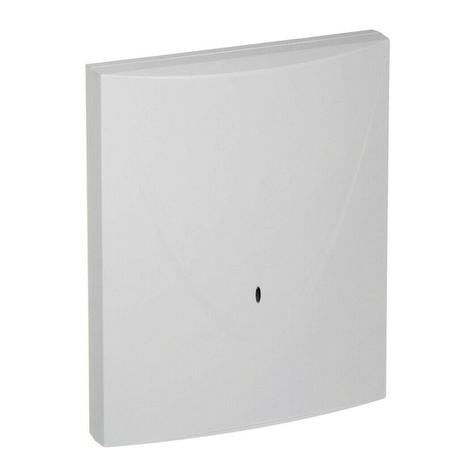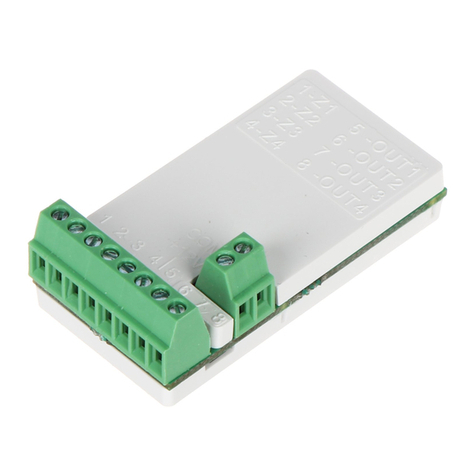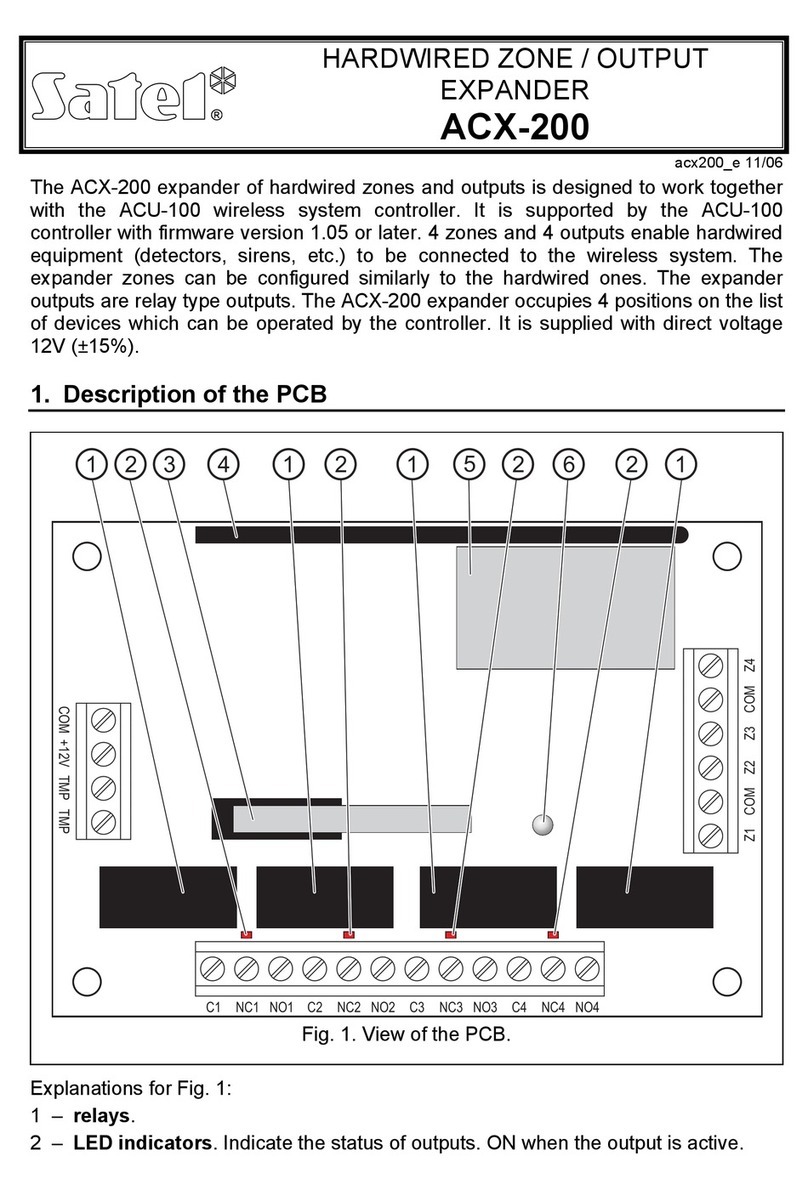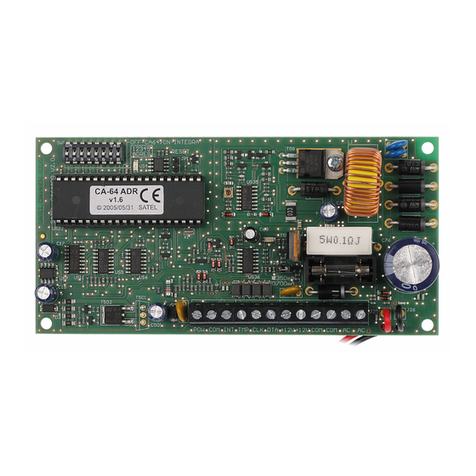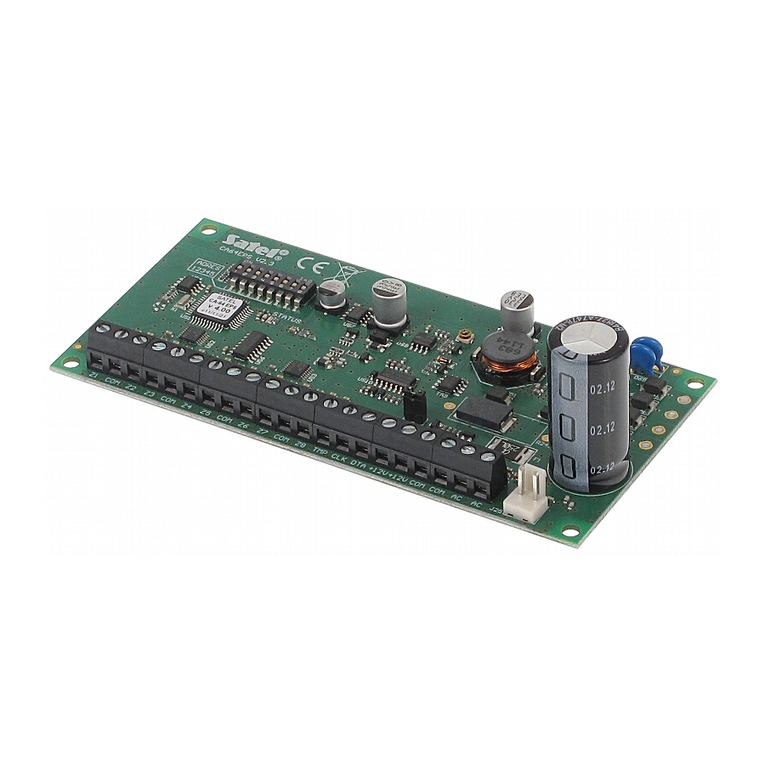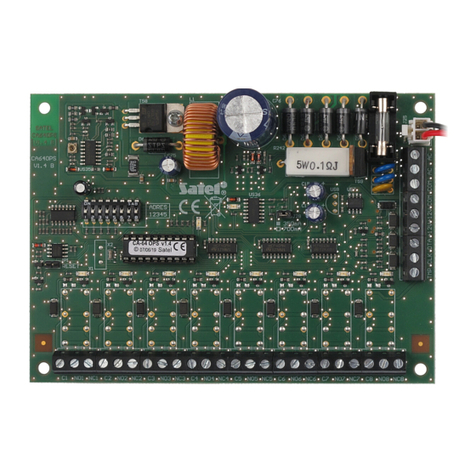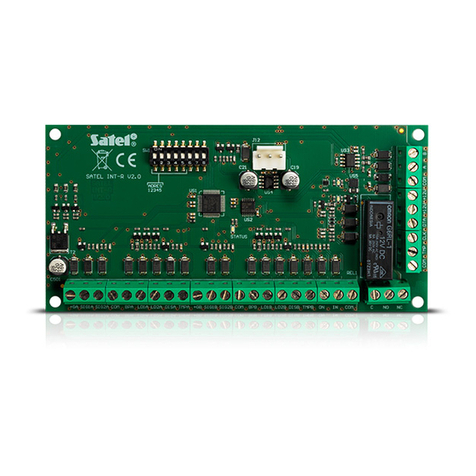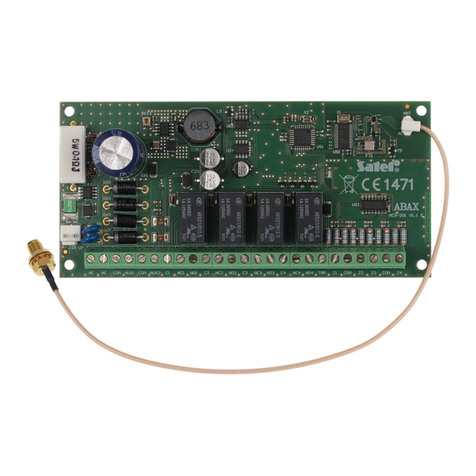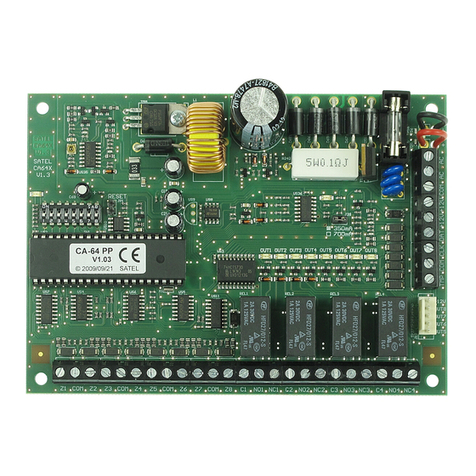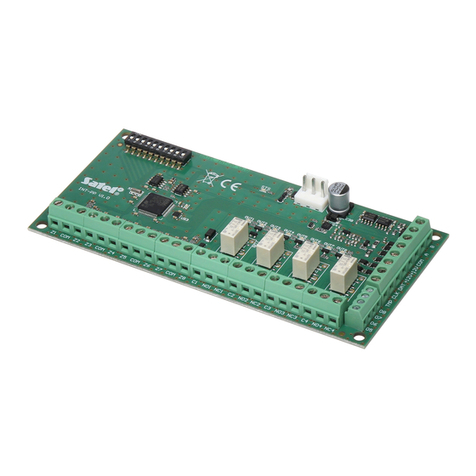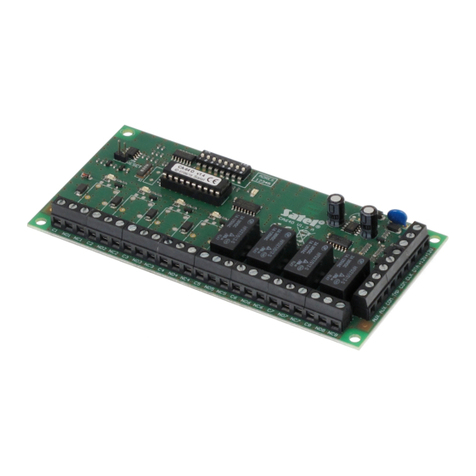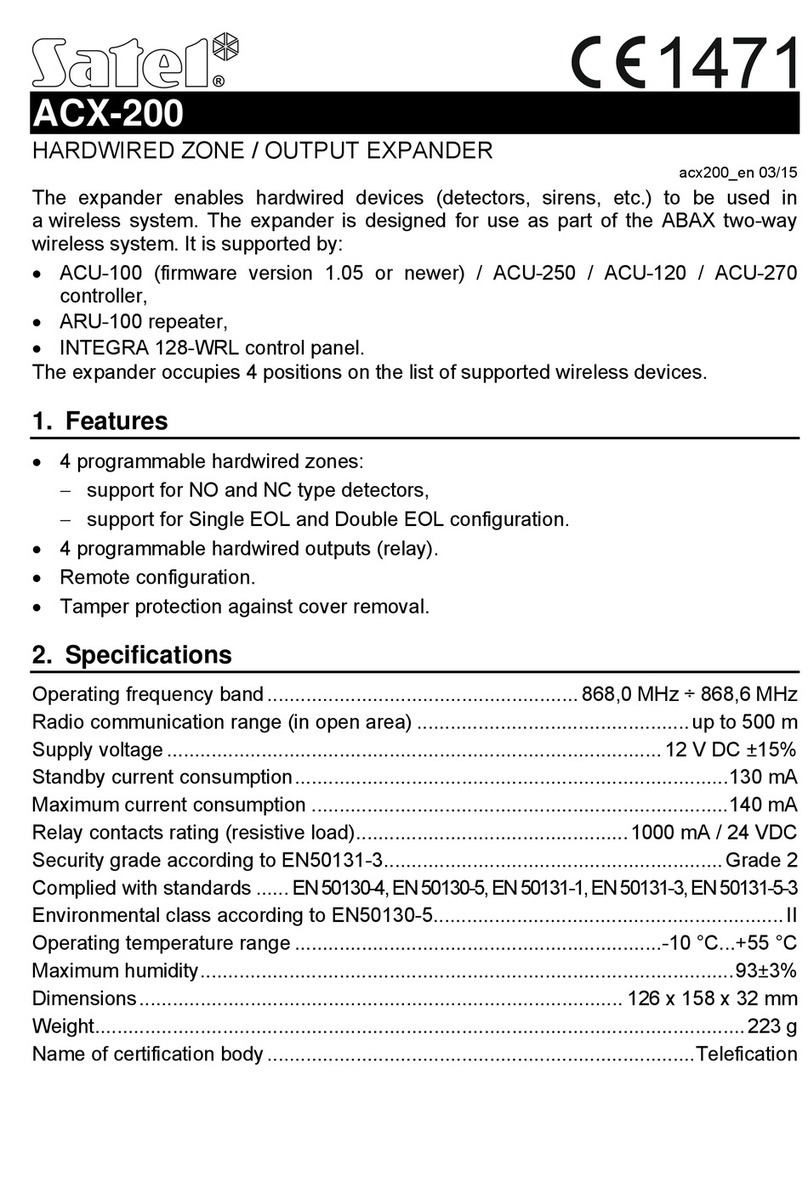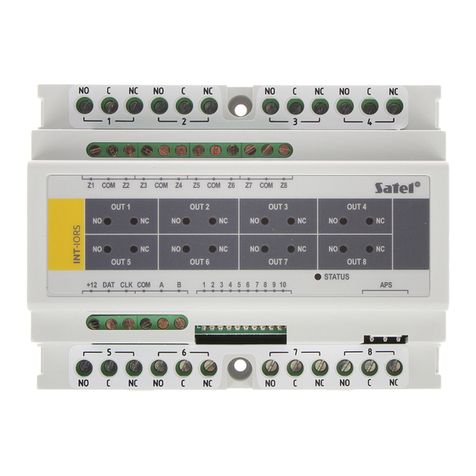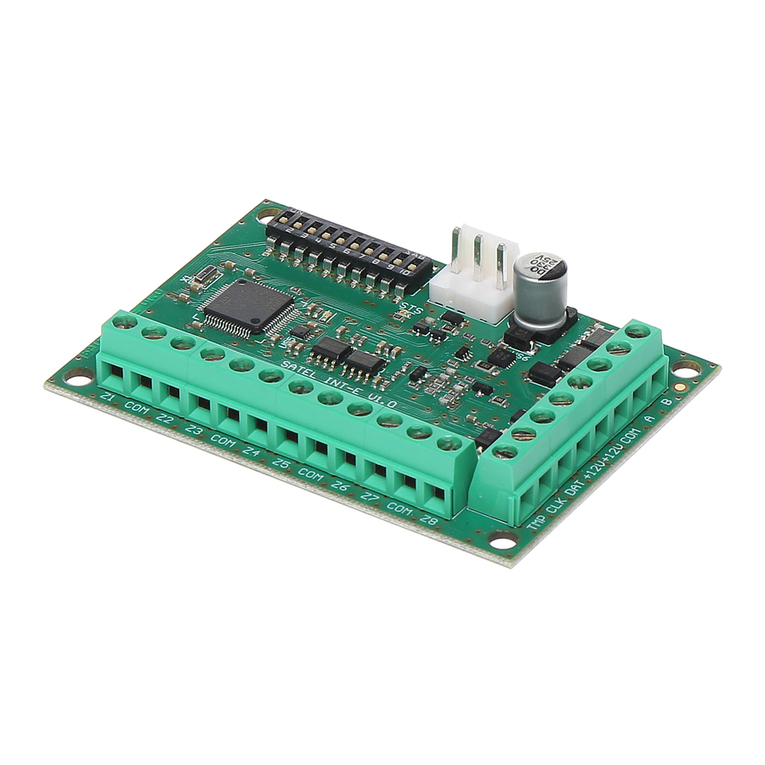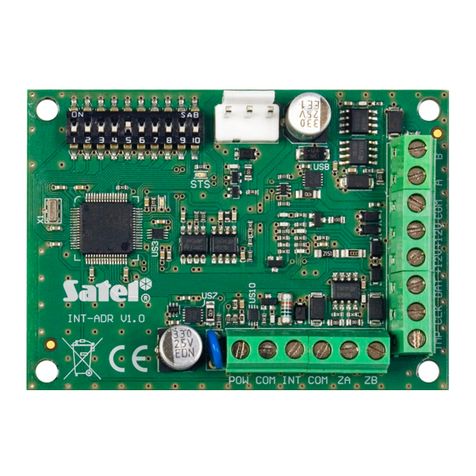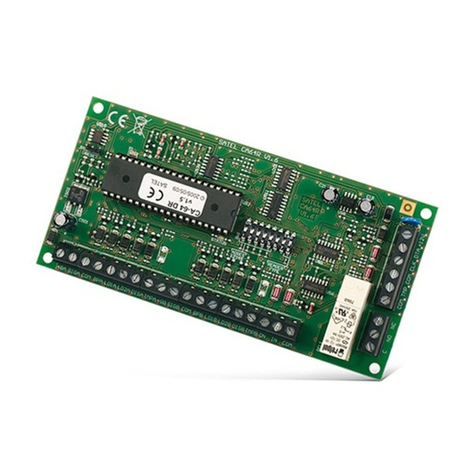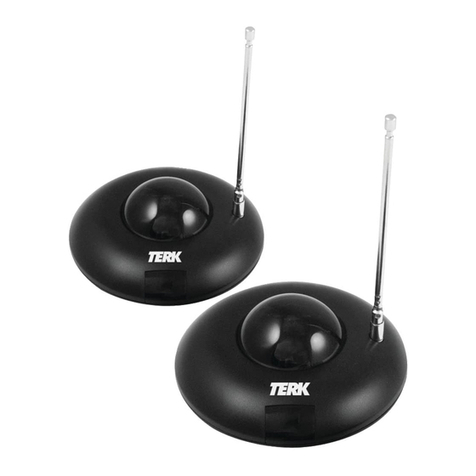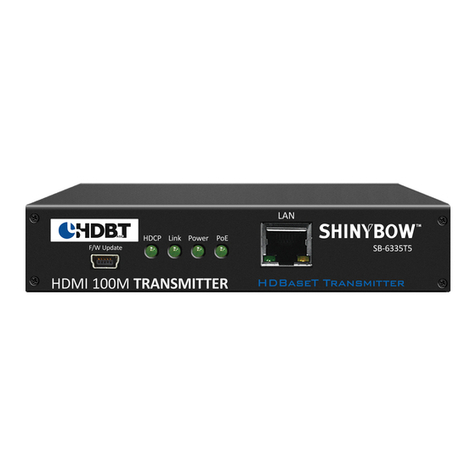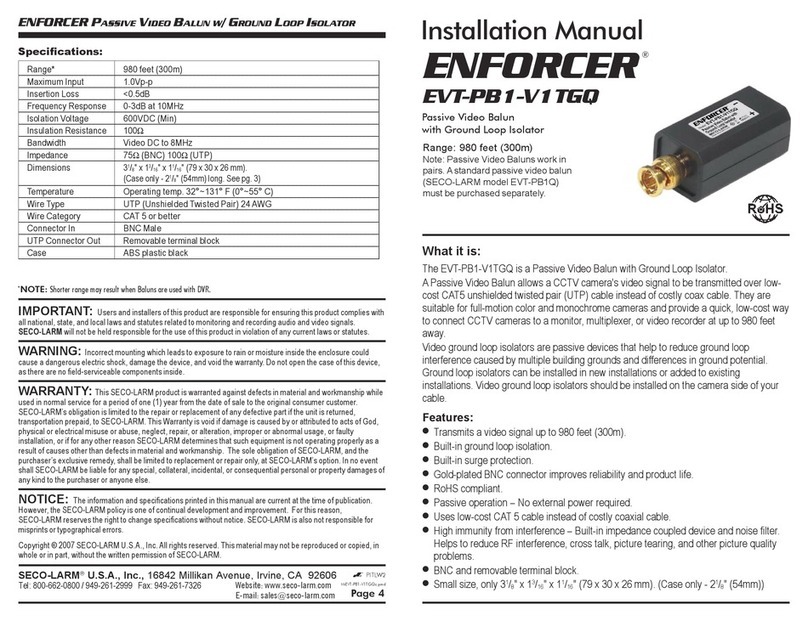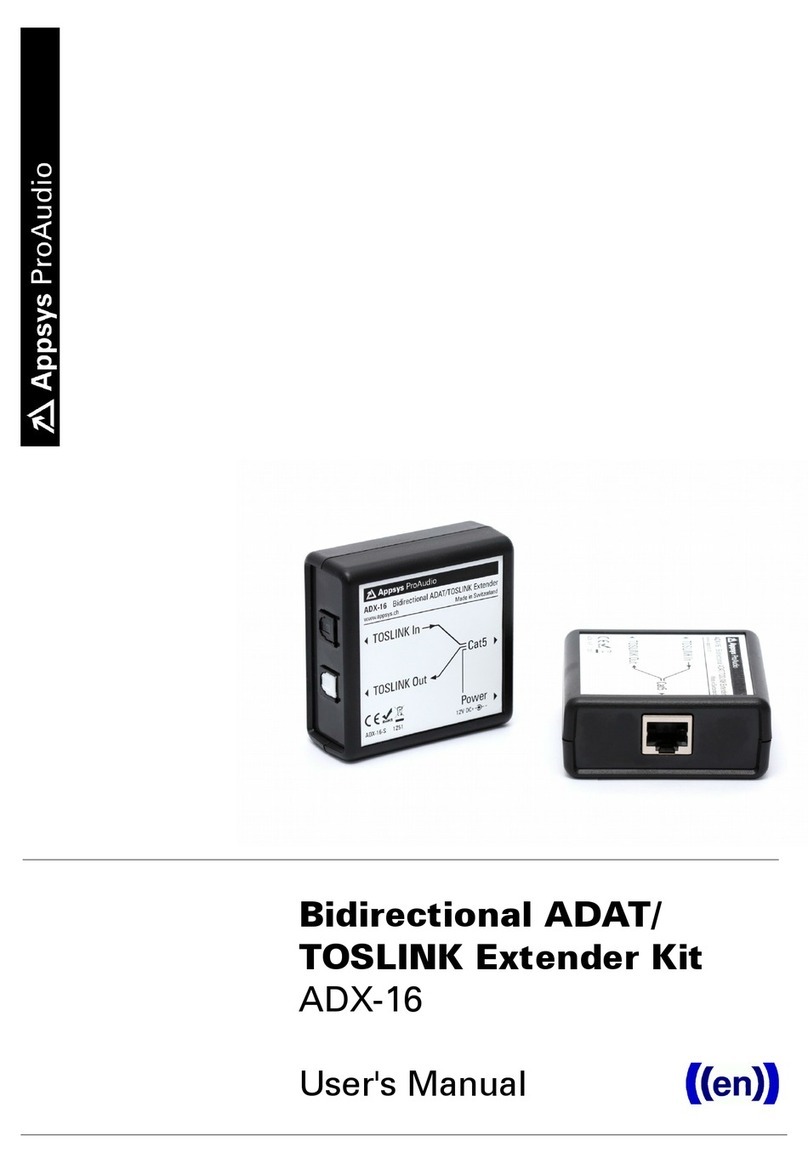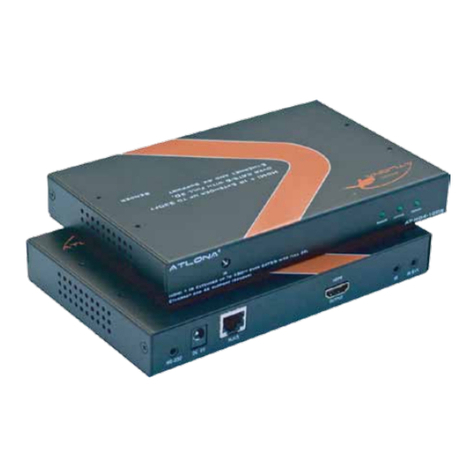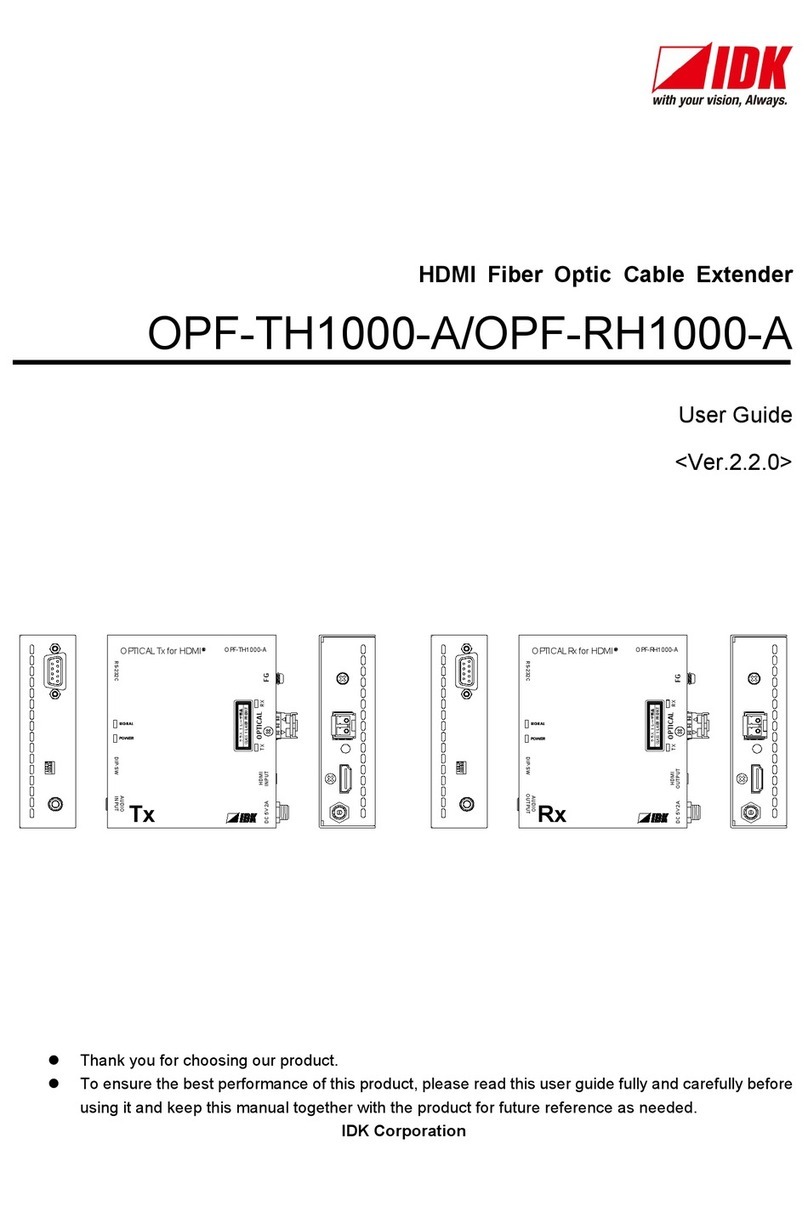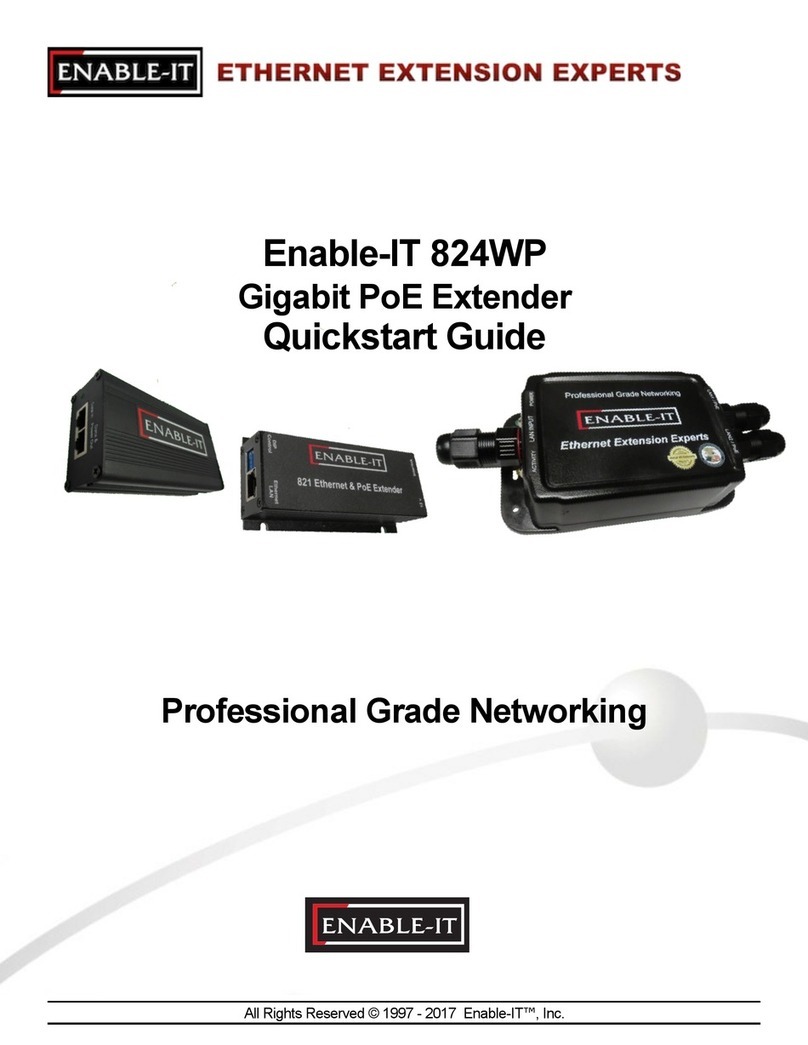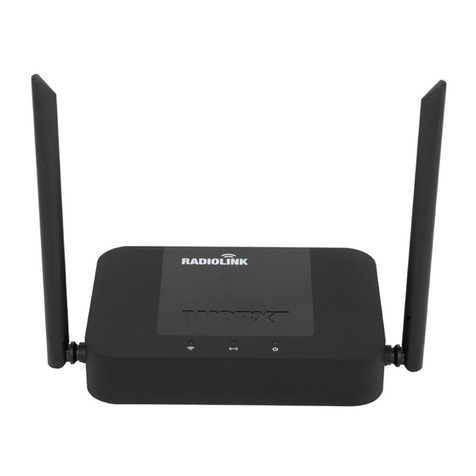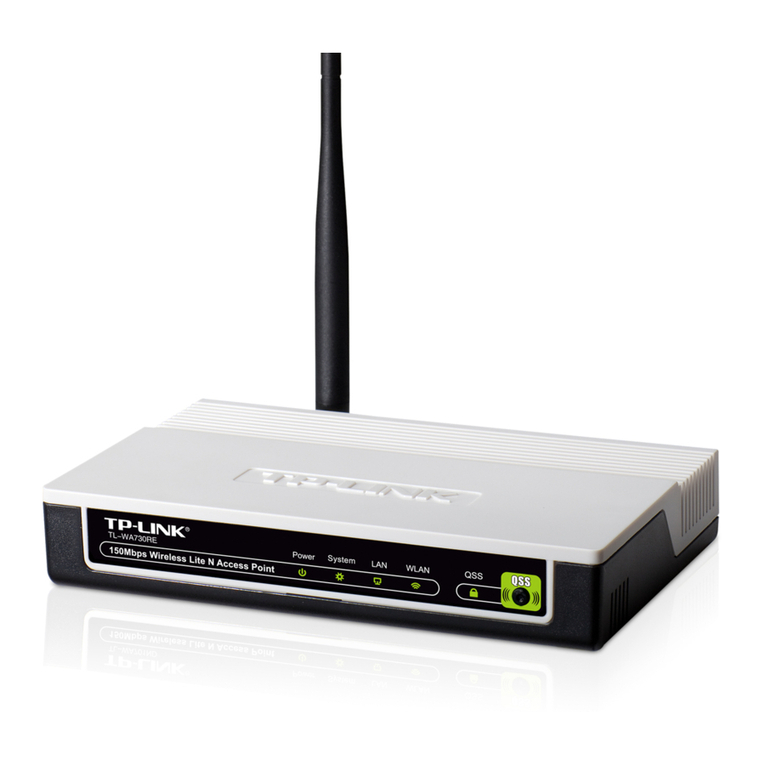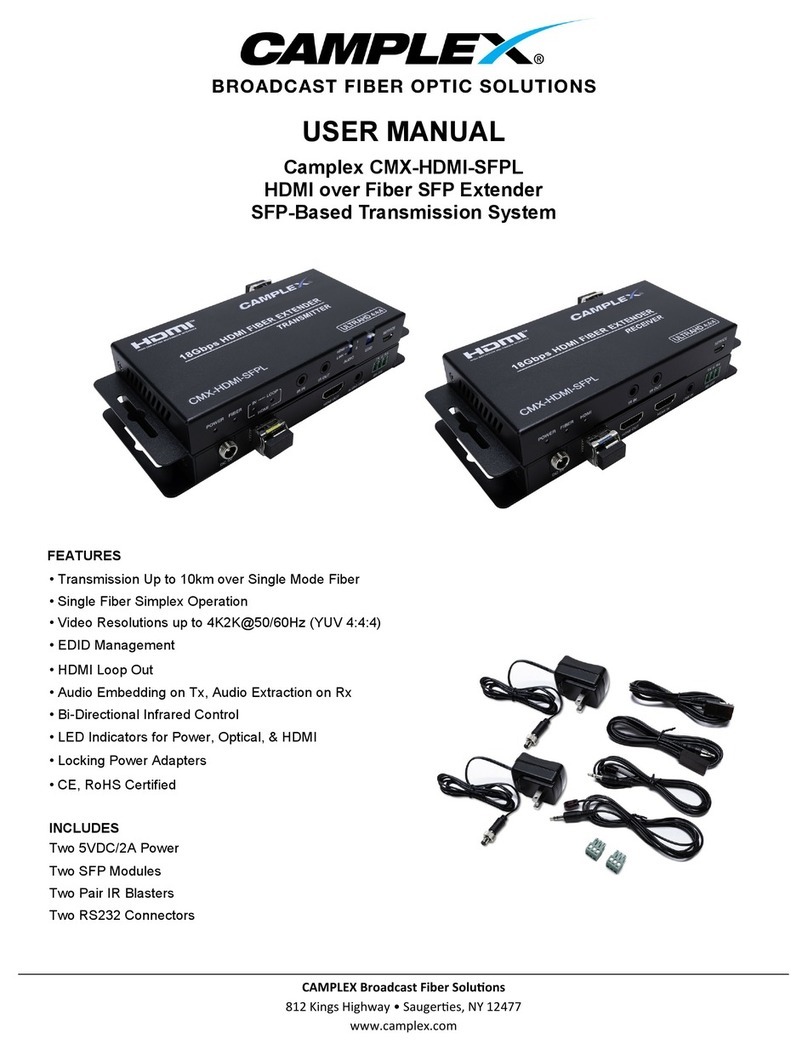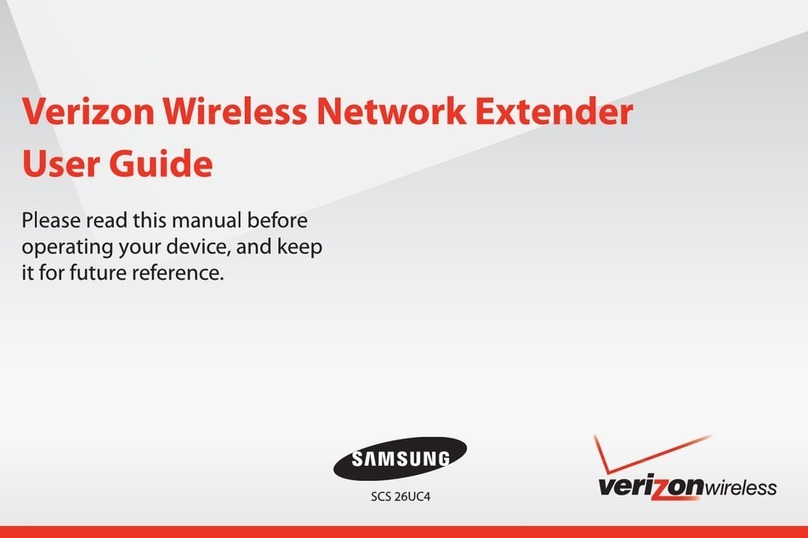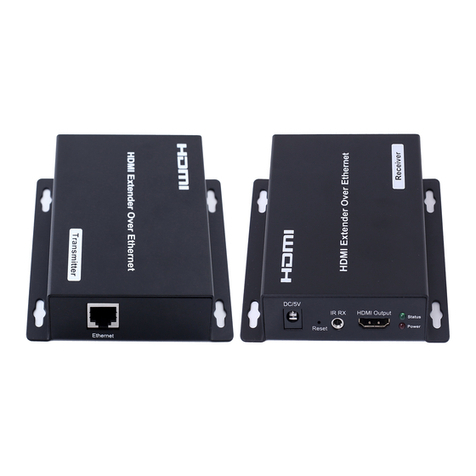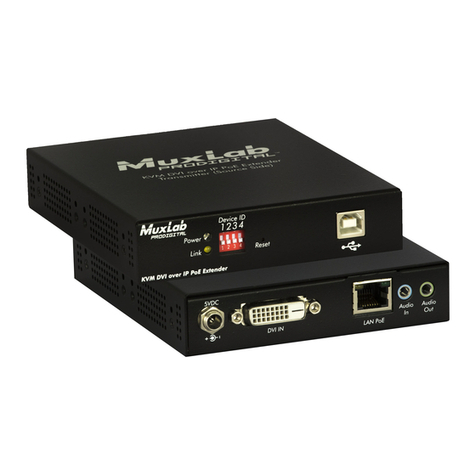
8 INT-R SATEL
Users [Master users / Users] – indicate the administrators (master users) and users who will
be authorized to use the readers connected to the expander.
Reader control (Reader A) [Reader A] / Reader control (Reader B) [Reader B] – options
available in the expander identified as CA-64 SR. The expander can control the reader
presence. Lack of the reader will generate a trouble (see also the R
EADER TAMPER ALARM
option). The reader presence control can be effected if the reader is provided with a
presence control circuit (the white wire in proximity card readers manufactured by SATEL).
Confirmation: Sound (Reader A) [Reader A sound] / Confirmation: Sound (Reader B)
[Reader B sound] – after reading the card code and its verification by the panel, the reader
can inform the user by means of sounds whether the requested function will be executed
or not (see: „Acoustic signaling” p. 10).
Confirmation: LED (Reader A) [Reader A LED] / Confirmation: LED (Reader B) [Reader B
LED] – after reading the card / iButton code and its verification by the panel, the reader
can inform the user by means of LEDs whether the requested function will be executed or
not (see: „Optical signaling” p. 10).
Arm (Reader A) [Reader A arms] / Arm (Reader B) [Reader B arms] – if this option is
enabled, the reader can be used for arming the partition to which the expander belongs.
No disarming [C.long not dis] – if this option is enabled, disarming by means of readers is
impossible.
Reader tamper alarm [Al.rdrs tamper] – option available in the expander identified as
CA-64 SR when the R
EADER CONTROL
option is enabled for reader A or B.
If the option is
enabled, lack of the reader will trigger tamper alarm.
Sign. card (hardware) [Hardw.signal.] – when this option is enabled, the reader will signal
audibly the card code readout. This kind of signaling is useful, if there is a time lag
between reading the card code and generating sound information after verification of the
card code by the control panel.
Alarm 3 incorrect codes [3 wrong codes] – if the option is enabled, three times reading the
code of an unknown card / iButton will trigger the alarm.
Control “BI” output [BI outs ctrl.] – using the card / iButton assigned to a code of the “B
I
”
OUTPUT OPERATING
type you can control the outputs of 25. BI
SWITCH
type.
Control “MONO” output [MONO outs ctr.] – using the card / iButton assigned to a code of
the “M
ONO
”
OUTPUT OPERATING
type you can activate the 24. MONO
SWITCH
type outputs.
Partition blocking [Part.blocking] – if this option is enabled, reading the card / iButton of the
user who uses a code of the B
LOCKING PARTITION
or G
UARD
type will temporarily block the
partition when armed (violating a zone belonging to the partition will not trigger any alarm).
The time of blocking should be defined for the partition or the code (of the B
LOCKING
PARTITION
type).
Guard round control [Guard control] – if this option is enabled, reading the card / iButton of
the user who uses a code of the G
UARD
type will be recorded as completion of a guard
round.
Alarm signal [Alarm (time)] – if this option is enabled, the proximity card readers will audibly
signal alarms throughout the G
LOBAL ALARM TIME
.
until canceled [Alarm (latch)] – if this option is enabled, the proximity card readers will
audibly signal alarms until they are cleared.
Sign. entry delay [Entry time] – if this option is enabled, the proximity card readers will
audibly signal the entry delay countdown in the partition to which the expander belongs.
Sign. exit delay [Exit time] – if this option is enabled, the proximity card readers will audibly
signal the exit delay countdown in the partition to which the expander belongs.
